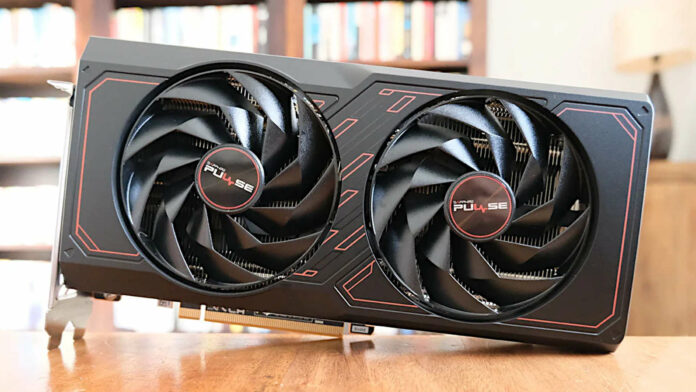Each RDNA 4 rumour offers a possible glimpse at the architecture’s final form, but these sneak peeks aren’t always what you hope to see. Case in point, lacklustre GPU specifications appear alongside the appearance of Navi 44 XL in a shipping manifest. While nothing’s set in stone, there’s likely a connection between the die and specs, indicating the unfortunate continuance of lacking memory bandwidth and capacity.
To be more specific, the best graphics cards in AMD’s Radeon RX 8000 series should use Navi 48 GPUs. Meanwhile, budget offerings will pack less powerful Navi 44 dies instead. Previous leaks suggested there may only be three pixels pushers sporting RDNA 4 chips. While greater breadth of choice is usually welcome, the more models the merrier, our 8GB VRAM woes may continue with this architecture.
Before we get ahead of ourselves, let’s talk Navi 44 XL. X user Olrak29_ shared listings from a shipping manifest, containing references to the RDNA 4 GPU die. We’ve seen Navi 48 XL and Intel Battlemage models emerge from similar prior leaks.
While this listing points to the existence of Navi 44 XL, it sadly doesn’t indicate how close graphics cards using it are to release. Rumours claim Navi 48 models will arrive in either October or during CES 2025, with Navi 44 following afterwards.
Of course, the more pertinent question facing both Navi 48 and 44 GPUs is if they’ll be worth waiting for. Architectural and feature improvements should boost their performance and value compared to Radeon RX 7000 series. However, a potential repeat of Radeon RX 7600 gives me pause.
Following in the wake of prior reports on three RDNA 4 GPU configurations, a fourth has emerged. If rumours hold true that Radeon RX 8000 will use GDDR6 memory modules, we could be staring another memory starved launch in the face.
Unfortunately, leaker All_The_Watts claims AMD plans to launch a graphics card with just a 128-bit memory bus. Given the constraints of GDDR6, this leaves AMD with little choice but to equip any graphics card using Navi 44 XL with either 8GB or 16GB of VRAM. Of course, this is using Radeon RX 7600 XT and its non-XT sibling as a reference point.
Comparisons to Radeon RX 7600 cards are all the more appropriate, given Navi 44 XL mirrors the Infinity Cache capacity and memory speeds of Navi 33 XL. For those unacquainted with these specs, that’s 32MB of the former and 18Gbps for the latter.
| GPU | Memory bus (bits) | Memory bandwidth (Gbps) | Infinity Cache (MB) |
|---|---|---|---|
| Navi 48 XTX | 256 | 20 | 64 |
| Navi 48 XT | 256 | 18 | 64 |
| Navi 44 XT | 192 | 19 | 48 |
| Navi 44 XL | 128 | 18 | 32 |
It would pain me to see 8GB of VRAM and sub-300Gbs/s bandwidth continue beyond the current generation of graphics cards. This set of specs isn’t enough to keep up with many of today’s most demanding games, and holds GPUs back. You needn’t look further than GeForce RTX 4060 Ti and its 16GB counterpart, the latter proving the superior pick if not for its absurd price.
Thankfully, Navi 44 XL could be bound for a Radeon RX 8500 XT or below rather than a 600 class card. The existence of that die likely implies that AMD has a Navi 44 XT kicking around, alongside a Navi 48 XT or XL to complement the previously leaked Navi 48 XTX.
Part of what makes cards like Radeon RX 7800 XT so compelling in the face of GeForce RTX 4070 Super is its memory bandwidth and capacity. If AMD hopes to capture market share from Nvidia, particularly among midrange and budget gamers, it can’t afford to repeat the mistakes it made with Radeon RX 7600. Suffice to say, any hopes of competing with an RTX 50 series alternative needs to offer greater value and be much cheaper.
While we wait for RDNA 4, check out our GeForce RTX 4080 Super review. It features the most up-to-date performance comparisons between Radeon RX 7900 XTX, AMD’s top performer.


